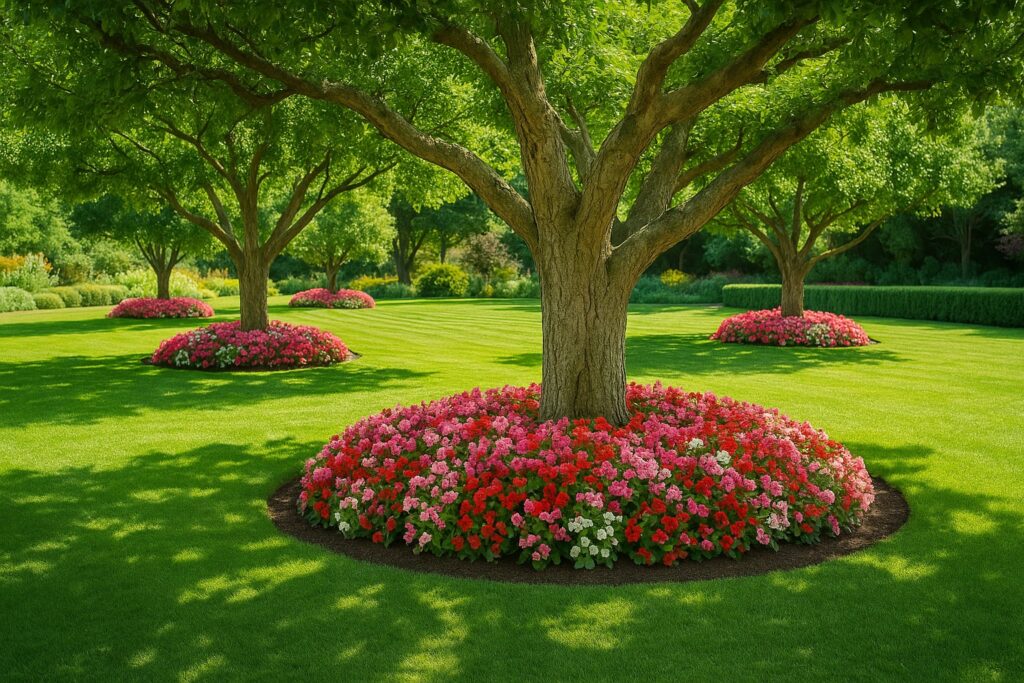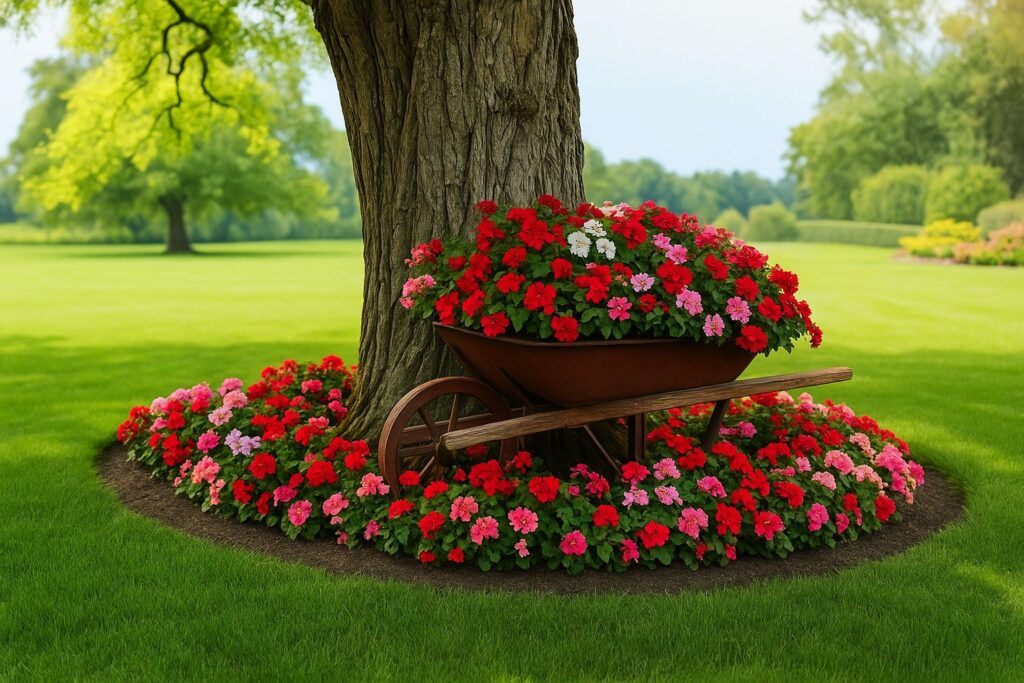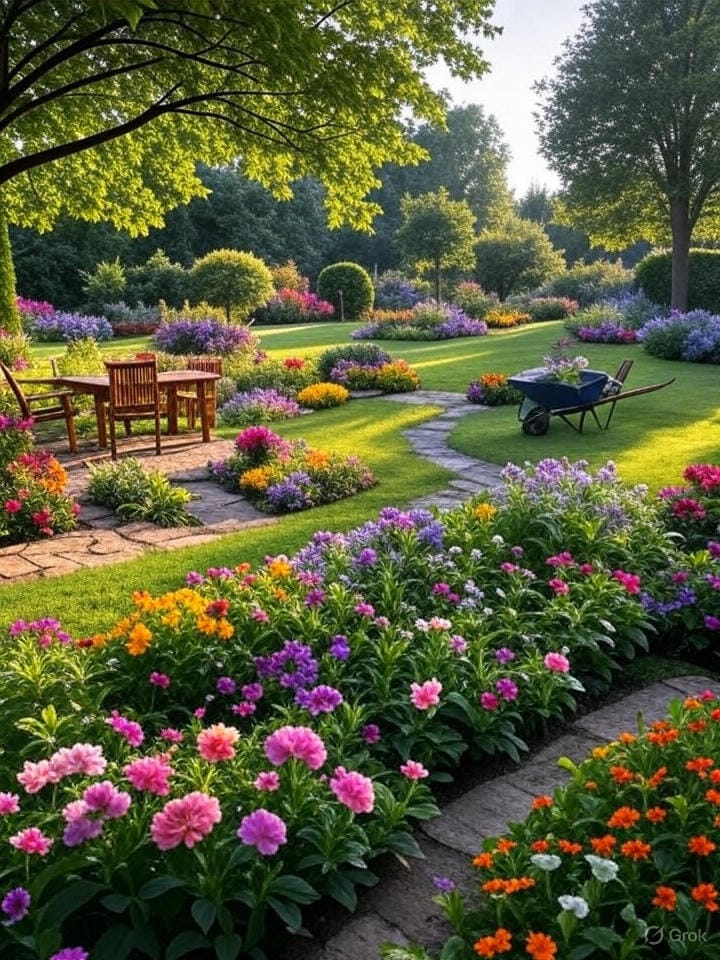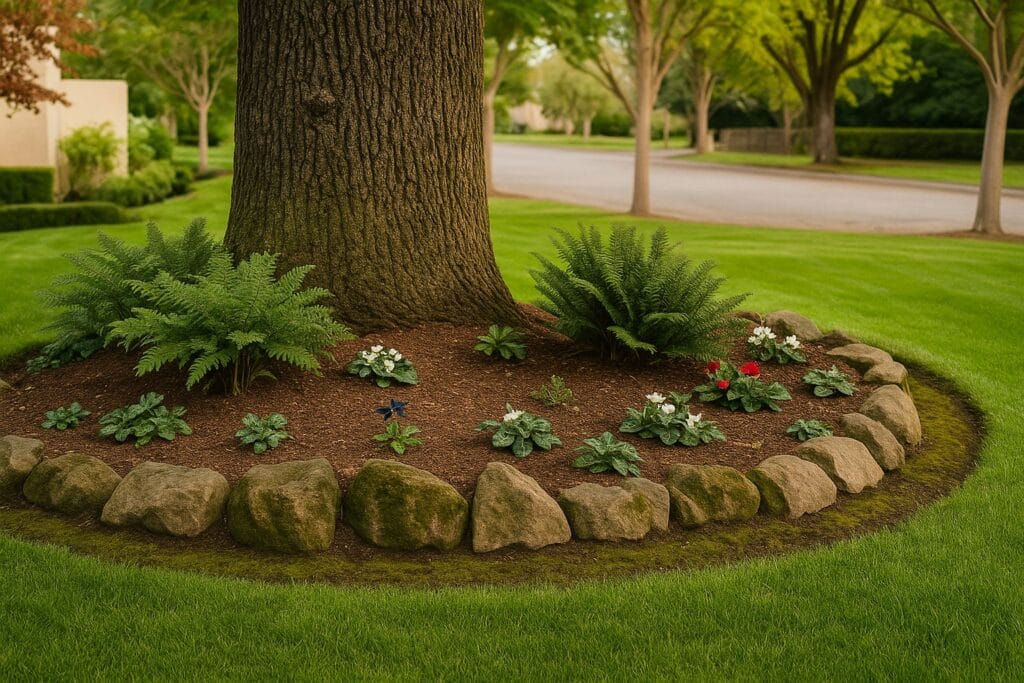
Table of Contents
ToggleWhy native tree underplanting is important?
You have noticed that in many cities Street trees are treated like stand-alone structures that are planted in pits and surrounded by concrete. They are barely allowed to interact with the soil or ecosystem around them. But that patch of ground at the tree’s base is more than just an overlooked design.
Native tree underplanting helps to restore the natural forest floor, support pollinators, improve soil health and even cool cities more effectively. In this blog I will show you exactly why native tree underplanting matters, street tree underplanting benefits and more….
Street trees underplanting benefits
According to the U.S. National Park Service, native plants support 35% more caterpillar biomass. According to the National Wildlife Federation, only 14% of native plant species act as keystone species — yet they support nearly 90% of all native wildlife
1. Urban biodiversity starts to return
Most City landscapes are biodiversity deserts. But native understory plants like groundcovers, small grasses and shade-tolerant flowers can easily attract insects, birds and other micro species back to the city’s most overlooked spaces.
2. Native pollinators find habitat in unexpected places
Tree pits with flowering natives often become mini oases for pollinators. From solitary bees to hoverflies, these tiny visitors rely on native plants that bloom when exotic ornamentals are silenced. I have seen in many cases that underplantings are the only native nectar source.
3. Ground-level cooling
Everyone talks about canopy shade but they ignore the fact that soil also stores heat. A living ground layer insulates the soil, reduces radiant heat from Pavements and cools through transpiration. These natural processes help in amplifying the cooling effect of the tree above.
4. Better stormwater management
Bare tree beds often compact and repel water. Native underplants with fibrous roots help rain to soak in gradually which helps in reducing runoff and protecting the tree’s own roots from erosion. It’s just like turning the tree pit into a mini sponge for urban rain events.
5. Reduced littering and soil compaction
A thoughtfully planted tree base discourages pedestrians from stepping on or tossing garbage into the soil. When you plant it signals care in urban design and care discourages vandalism. It’s like Passive deterrence that saves maintenance costs.
6. Visual softening of the Hard urban edge
Since Concrete curbs and infrastructure make city streets look harsh, A native ground layer introduces soft texture, seasonal colors, and a sense of life at eye level especially for children and pets. A street tree becomes a micro-park instead of just a pole with leaves.
7. Improved soil structure
The relationship between soil and tree is mutual. Underplants reduce evaporation from the soil, feed beneficial fungi and stabilize temperature swings. All of this supports the health and root function of the tree above. A healthy understory is like a medical kit for street trees.

Challenges of urban tree ground layer planting
Underplanting beneath urban shade trees may sound simple right? Just add native plants and watch biodiversity bloom. But in reality it’s one of the most technically challenging types of small space ecological restoration. You know what Green Bridges?
1. Compacted and poor soil quality
Urban soils are often heavily compacted due to foot traffic and past construction. This limits water infiltration and suffocates roots which makes it hard for both trees and underplants to thrive. Solutions –
- Use hand tools or an air spade to gently loosen the top few inches
- Add compost and organic matter, but avoid deep digging that disturbs tree roots
- Choose native species that are adapted to shallow or degraded soils
2. Risk of damaging tree roots
Most Street trees have shallow roots spread wide under the Pavements. Deep planting or aggressive digging can harm them and also stress them which eventually becomes the reason for their death. Solutions –
- Stick to shallow-rooted native plants
- Never dig deeper than 3-4 inches
- Work around large surface roots rather than cutting across them.
3. Limited light penetration
The shade formed by mature tree canopies limits the amount of light that reaches the ground and especially on north-facing streets or between tall buildings. Solutions-
- Choose shade-tolerant native plants
- Focus on species with low light needs and flexible growth habits.
- Use lighter mulch or gravel to subtly reflect more light toward the plants.
4. Pedestrian pressure and foot traffic
Tree pits are often walked over, compacted or used as trash bins which can crush young plants or destroy soil structure. Solutions-
- Use subtle edging (stones, metal strips or low fencing) to signal boundaries.
- Plant dense groundcovers that visually discourage stepping in.
- Consider community signage or QR code tags to educate pedestrians.
5. City regulations and Restrictions
Many cities restrict what should be planted around public trees due to utility access liability concerns or a lack of maintenance staff. Solutions for this major issue-
- Check with your local urban forestry or parks department before planting
- Focus on removable or low-maintenance species that won’t interfere with City work
- Make collaboration with local green non-profits or neighbourhood associations to advocate for biodiversity-friendly policies

Design tips for shade tree understory biodiversity
Urban tree pets are small exposed and often overlooked but when they are designed with shade tree understory biodiversity in mind they become a thriving pocket of life. Smart design is what makes the difference. Do you know what ROAD VERGES ?
Think in layers, not just plants
A natural forest floor is not one-dimensional it’s layered. Mimic that structure and boost resilience and habitat value. Mixing forms creates vertical structure, reduces competition and attracts more diverse wildlife.
- Base layer : creeping groundcovers ( wild ginger, barren strawberry)
- Mid layer: small native grasses or sedges
- Accent layer: shade-tolerant forbs that offer seasonal blooms
A plant’s ability to adapt microclimate
Every tree bed is unique you just have to notice a few things and then choose species that are adapted to those specific conditions. Don’t plant blindly from watching general lists.
- How much light hits the pit during the day ?
- Is the soil dry, soggy or compacted ?
- Is it near a wall busy street or a lawn ?
Use Edging to Define space without overbuilding
A proper subtle edging helps multiply as shown below
- Protecting the planting zone from pedestrians
- Prevent soil runoff
- Create visual structure
Here are a few options – cobblestones, steel strips, recycled wood, or living edges like low-growing plants.
Choose species that spread- but not aggressively
In tight urban spaces, you want ground-layer plants that fill space, not ones that choke the tree roots or compete for moisture. Just simply look for :
- Native plants with fibrous roots, not taproots
- Spreading species that form soft mats (woodland phlox, wild blue violet)
Design for Seasonal continuity
Plan combinations that offer visual interest across seasons from early spring flowers to fall seed-heads that birds will love. One bonus tip that I also use , seasonal layering attracts different pollinators at different times of the year.
Keep future Maintenance in mind
Whenever you are designing it you must keep in mind that someone (maybe you or the city) will need to clean, water or trim the area. So –
- Avoid overly dense planting at the base of the tree trunk
- Leave access points clear
- Choose low-maintenance native species over garden cultivars that are poor in nectar

Common mistakes to avoid in native tree underplanting
It’s easy to get excited about turning a lifeless tree pit into a thriving patch of green but small mistakes can ruin your whole plan. Follow this guide for constructed wetlands
Planting too deep around the base of the trunk which encourages pests and fungal diseases, blocks oxygen exchange at the root crown and weakens the structural stability over time. Instead of this keep the trunk flare fully visible and maintain a shallow Donut of soil around the tree, never make it a volcano.
Using dense or invasive ground covers smother young tree roots, compete heavily for water and nutrients and spread uncontrollably into other pits or natural spaces. So instead of this you should use soft spreading native species that coexist with roots like woodland phlox, wild strawberry or wild ginger.
Digging too deep and disturbing roots. It exposes roots to air and they began to dry. It damages fine feeder roots and causes long-term decline in canopy health. So instead you should only loosen the top 2-3 inches of soil lightly and never cut across larger roots.
Overcrowding with too many plants. It increases humidity and rot near the base, Blocks light from reaching low growers and leads to rapid die-off or stunted growth. So as a solution give perfect spaces to plants while keeping future growth in mind. Use a naturalistic layout.
Choosing high-water or full-sun plants, some people use pretty plants that don’t match real site conditions, like full-sun species in deep shade. It causes plants to fail quickly, encourages constant watering which can harm tree roots and Increases replacement and maintenance costs. You should always match plants to actual conditions. Think like a woodland edge, not a garden bed.
FAQs
Can I plant anything under a street tree or is there any restriction ?
Clearly No, because not all plants are safe or allowed. Many cities have regulations about what you can plant near public trees due to root protection, visibility and utility access. Always choose low growing native species and check with your local urban forestry department before planting.
What types of native plants grow well In The shade beneath trees ?
So for sale tolerant Woodland natives like wild ginger, woodland phlox, zigzag goldenrod or sedges (like Carex app). These plants are adapted to low light, dry conditions and shallow soils which are common problems under urban trees.
Is underplanting harmful to tree's roots ?
You might be surprised but yes, urban tree ground layer planting can be harmful if done incorrectly. Digging too deep planting large rooted species, or poling soil around the trunk can damage shallow feeder roots. Stick to light surface planting with minimal soil disturbance and avoid planting directly against the Trunk.
